
You’d be hard pressed to find another vintner in Niagara who spends as much time in the dirt, literally IN THE DIRT, as Flat Rock Cellar proprietor Ed Madronich.
The man knows every inch of every block planted on his property, which includes 80 acres of Chardonnay, Pinot Noir, Riesling, with a small patch of Gewurztraminer on the Twenty Mile Bench.
 The winery, perched on a gently rolling slope on a piece of the Niagara Escarpment known as the Jordan Bench (the view just can’t be beat), was founded in 1999. Madronich felt the climate and soil at his property provided the perfect conditions for what he has built his portfolio around — Pinot Noir, Chardonnay and Riesling.
The winery, perched on a gently rolling slope on a piece of the Niagara Escarpment known as the Jordan Bench (the view just can’t be beat), was founded in 1999. Madronich felt the climate and soil at his property provided the perfect conditions for what he has built his portfolio around — Pinot Noir, Chardonnay and Riesling.
Those are the grape varieties Madronich says perform well no matter the vintage in the unpredictable climate of Niagara.
“Why do we always talk about Bordeaux varieties,” he says, referring to the highly rated vintages of 2012, 2010, 2007 etc., all vintages that were highly rated because Merlot, Cabernet Sauvignon and Cabernet Franc ripened beautifully.
The Flat Rock owner argues that vintages such as 2009, 2011 and 2008 were as good or better for what Niagara grows best — Pinot Noir, Chardonnay and Riesling. He can’t understand why more Niagara wineries don’t concentrate more on these varietals and abandon some of the vintage-sensitive grapes that only perform in warm years.
“The thing about Niagara,” Madronich says, “is every vintage is different. You just have to pick the right grapes. “For me, it’s about balance, taking what Mother Nature gives you and not messing it up.”
That, and understanding exactly what you’ve got.
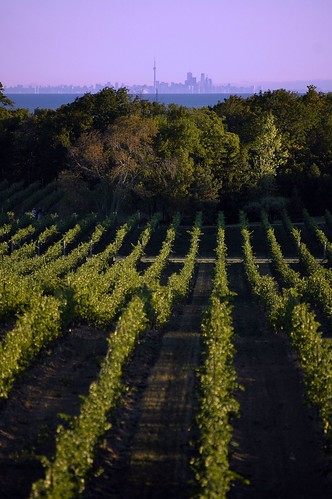
This is where Madronich and his team spend an inordinate amount of time. Learning what every inch of the estate’s vineyards deliver and contribute to the wine is part of the on-going education at Flat Rock.
He did a fascinating experiment with the 2011 Pinot Noir vintage that dialed down to the distinct Pinot blocks in the vineyard.
Madronich gave the experiment a name: The Block Series, with the ultimate goal to learn about the vines within those blocks and to show consumers how the various conditions in a vineyard shape the wine.
The Block Series Pinots come seven years after the release of the limited edition Clone Series, which explored the make-up of Pinot Noir through the three Dijon Clones planted in Flat Rock Cellars’ estate vineyard – 115, 667 and 777.

Madronich decided it was time to elevate Flat Rock’s exploration of the vineyard and further understand what it can deliver.
The Block Series release came out of trying to get a better picture of how his maturing vineyard has developed and what goes into the blended Pinot Noirs.
 This experiment focused on different parcels of vineyard that show the nuances in terroir. When crafting each unique blend of Pinot, Flat Rock now doesn’t just consider a specific clone, they consider all elements of the vineyard site – soil, slope and altitude. Madronich, left, hopes the Block Series will allow consumers to taste the difference.
This experiment focused on different parcels of vineyard that show the nuances in terroir. When crafting each unique blend of Pinot, Flat Rock now doesn’t just consider a specific clone, they consider all elements of the vineyard site – soil, slope and altitude. Madronich, left, hopes the Block Series will allow consumers to taste the difference.
Madronich’s motivation for creating this series resulted from tasting the individual barrels in the cellar that would be selected to go into the Estate and Gravity Pinot Noirs.
“There was a striking difference between the different vineyard blocks. I immediately thought our customers and curious wine-geeks must have the opportunity to try this educational experience,” he says.
Fewer than 100 cases were made of each so this is less about a sales exercise and more about understanding what elements make up the Pinot Noirs in the portfolio and why Flat Rock can offer stylistically different Pinots to the consumer.
Flat Rock breaks down its vineyards into unique blocks with three different clones of Pinot planted on two different root stocks.
Clones played a big role and were distinct as far back as 2004, says Madronich, but it eventually became “harder to tell the clones apart.” By the time 2011 rolled around “we found three major factors that impacted flavour ripeness and complexity in the wine,” says Madronich.
The three factors that stood out were:
1) Soil;
2) Slope of the land (drainage, air flow, and the angle the sun hits the vines);
3) Elevation (“way more important than what you think with temperature variation,” according to Madronich.)
These ingredients led to the ultimate goal of “picking the grapes when they are at optimum ripeness.”
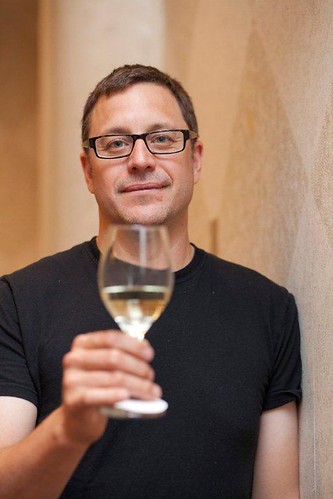 That now involves over 20 different pickings of the Pinot Noir grapes alone, which results in 20 different tanks of Pinot juice (winemaker Jay Johnston, left, vinifies each picking separately) and eventually 200 different and unique barrels of wine before the blending of the various wines even begins.
That now involves over 20 different pickings of the Pinot Noir grapes alone, which results in 20 different tanks of Pinot juice (winemaker Jay Johnston, left, vinifies each picking separately) and eventually 200 different and unique barrels of wine before the blending of the various wines even begins.
Madronich thought his 2011 experiment would be fun for consumers to taste, to see if they could discern the differences between three distinct blocks. The wines, Bruce Block, Summit Block and Pond Block, were bottled (and available for sale at the winery) to show that “complexity is made in the vineyard, they are wines of the soil,” he says. They were all made essentially the same way — hand picked, sorted, destemmed and fermented in stainless steel vats. All are around 12.5% alc with virtually the same residual sugar, TA, Brix and PH.
I tasted the three “Block” wines with Madronich along with some other wines. Here’s is what we enjoyed:
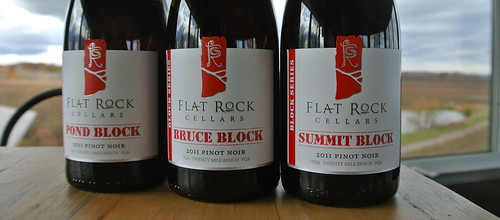
Flat Rock Cellars Bruce Block Pinot Noir 2011 ($30) — Bruce is the most northern of the blocks, located next the Escarpment on a south-facing slope. The 115 Clone is thick-skinned, low vigour, low yields, small berries with more tannins and colour extract. The wine reveals bright raspberry fruit, cherry, perfume and red licorice and subtle spice notes on the nose. The flavours range from tart cherry-raspberry to earthy-spicy notes.

Flat Rock Cellars Summit Block Pinot Noir 2011 ($30) — Summit is the more elevated block at Flat Rock with a colder, windier north-facing slope. It ripens late and thus retains acidity and generally more intense due to the slow ripening. The nose shows less forward fruit than the Bruce with more earth, spice and Pinot funk. It’s lush and elegant on the palate with evident tannins, Espresso bean and lovely texture.
Flat Rock Cellars Pond Block Pinot Noir 2011 ($30) — Grown on a west-facing slope and benefiting from the evening sun resulting in ripe berry flavours, light structure and not very tannic. The nose shows ripe, pretty red fruits, cherry extract and light spice notes. It’s fresh and vibrant on the palate with dominant red fruits that are soft and round to go with smooth, velvety tannins.
Flat Rock Cellars Estate Pinot Noir 2011 ($20, Vintages, winery, 89 points) — A mid-weight Pinot with warm cherry fruit, earth, spice and beet root aromas. It’s smooth and delicious on the palate with loam, red fruits, savoury-smoky notes and spice. Great porch-sipping Pinot or serve with cedar plank salmon.
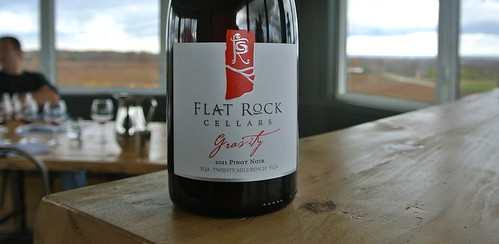
Flat Rock Gravity Pinot Noir 2011 ($30, Vintages, winery, 91 points) — Flat Rock Cellars’ Gravity is designed to showcase the “best of the best” in the estate’s Twenty Mile Bench vineyard and cellar. That means careful selection of the best parcels of Pinot Noir vines, vinified separately and then the best is chosen from individual barrels. The nose shows generous cran-cherry fruit with a subtle note of earthy goodness and oak spice. It’s pure and delicious on the palate with bright red fruits, ripe tannins, vibrant acidity and good length through the finish.
And some of the other Flat Rock wines released now or coming soon:
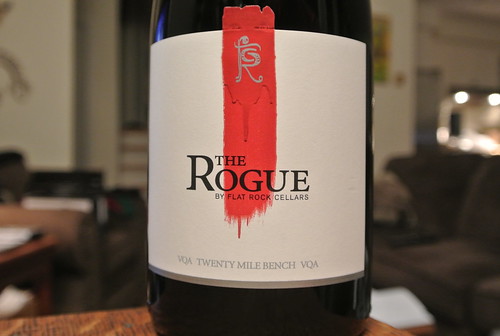
Flat Rock Cellars The Rogue Syrah 2011, Niagara ($35, winery only, 92 points) — A menacing looking Syrah made unfiltered and showing thick, dark juice that oozes smoky oak, grilled meats, plums, kirsch, cassis and an array of savoury spices on the nose. The meaty black fruits are joined by lavish spices, dried herbs and campfire smoke on the palate. A real treat.
Flat Rock Cellars Estate Chardonnay 2010 ($17, Vintages on Jan. 18, 88 points) — A juicy mix of peach, citrus, flinty minerality and integrated spice notes on the nose. It’s perfectly mature and ready to drink with concentrated pear, peach, vanilla spice and a lovely vein of minerality through the core. Good value Chardonnay.
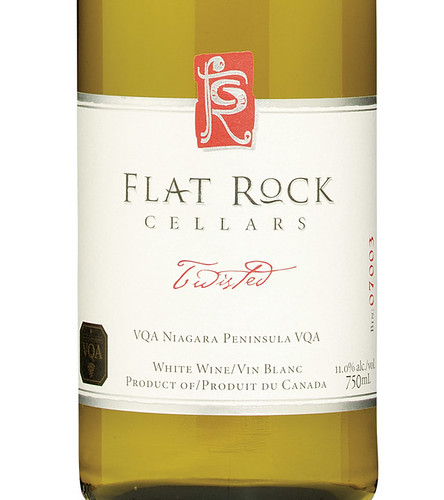 Flat Rock Cellars Nadja’s Vinyeard Riesling 2012 ($20, Vintages on Feb. 1, 91 points) — Nadja’s Vineyard is situated at the most southern and highest point of the Flat Rock holdings on top of a solid bed of limestone. The nose shows zesty lime, green apple and peach with honeysuckle and flinty minerality. Nadja always has a lovely subtle note of jasmine to go with stone fruits and citrus. It shows wonderful fresh acidity, considering the heat of the vintage.
Flat Rock Cellars Nadja’s Vinyeard Riesling 2012 ($20, Vintages on Feb. 1, 91 points) — Nadja’s Vineyard is situated at the most southern and highest point of the Flat Rock holdings on top of a solid bed of limestone. The nose shows zesty lime, green apple and peach with honeysuckle and flinty minerality. Nadja always has a lovely subtle note of jasmine to go with stone fruits and citrus. It shows wonderful fresh acidity, considering the heat of the vintage.
Flat Rock Cellars Twisted 2012 ($17, Vintages, winery, 89 points) — Flat Rock has perfected this aromatic blend of Riesling, Gewurztraminer and Chardonnay. The nose shows opulent notes of peach, grapefruit, and ripe apple slices. It’s rich and fleshy on the palate, owing to the warm vintage, with just a touch of sweetness.






Comment here